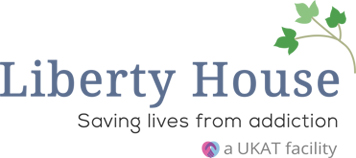In the 1970s and 1980s, cocaine was often portrayed in the media as a luxurious party drug, for the hedonistic lifestyle of the rich and famous. This glamorous image was reinforced by its presence at exclusive events and in elite social circles, contributing to its allure and widespread use during this period.
Despite its initial portrayal as a symbol of wealth and success, cocaine use leads to severe health issues, including cardiovascular problems, neurological damage, and psychological disorders. The drug’s highly addictive nature can result in significant social and economic consequences, such as increased crime rates and substantial public health costs.
Rise of the drug
The 1980s and 1990s marked a shift in the drug’s use, transitioning from a niche substance to a widely consumed recreational drug. The rise of the Medellín and Cali cartels in Columbia facilitated the mass production and distribution of cocaine, making it more accessible and affordable across the globe. The “cocaine boom” saw the drug infiltrate all parts of society, becoming prominent among affluent people.
Media
The media played and still plays a crucial role in shaping the perception of cocaine as an appealing substance. Films, television shows, and music of the 1980s and 1990s often depicted cocaine use as a symbol of wealth, power, and sophistication. Iconic films like “Scarface” and TV shows such as “Miami Vice” showcased the lavish lifestyles associated with cocaine trafficking and use, further embedding the drug within popular culture. Even portrayals of the real history of the birth of the drug (such as in Netflix’s Narcos) fail to completely strip the aura of appealing magnetism that comes with the widespread acceptance of cocaine use.
Celebrities
High-profile cases of celebrities indulging in cocaine, coupled with its frequent mention in songs and celebrity lifestyles, made the drug appear more socially acceptable. Figures in the music industry, particularly within genres like rock and roll and later hip-hop, often glorified drug use, further embedding it into the cultural zeitgeist.
Physical and mental health repercussions
The short-term physical effects of cocaine use are characterised by:
- Increased energy
- Euphoria
- Heightened confidence
- Increased alertness
- Reduced need for sleep or food
- Increased sociability
Physiologically, cocaine can cause:
- Elevated heart rate
- Higher body temperature
- Dilated pupils
These effects make cocaine attractive as a recreational drug, but they also come with significant risks, including erratic behaviour and the potential for violent actions.
Long-term physical health consequences
Chronic use is associated with cardiovascular issues such as:
- Heart disease
- Hypertension
- Increased risk of heart attack
- Respiratory problems
- Neurological damage
Mental health impacts
Mentally, cocaine use is linked with a range of adverse effects. Short-term use can induce anxiety, paranoia, and restlessness. Over time, these symptoms can escalate, leading to chronic mental health disorders. Long-term use increases the risk of severe psychiatric conditions, including heightened anxiety, chronic depression, and paranoid psychosis. The compulsive nature of cocaine use can also lead to addiction, exacerbating these mental health issues and making recovery more challenging.
Escalation
Initially, cocaine use tends to be voluntary, but repeated use can lead to compulsive drug-seeking behaviour, making it difficult for people to resist the urge to use cocaine.
Cocaine works by increasing dopamine levels in the brain, which creates intense feelings of euphoria. However, as tolerance builds, users need higher doses to achieve the same effects, which further reinforces the addiction cycle. Chronic use can also lead to severe health issues, including heart attacks, strokes, and long-term cognitive impairment.
Impact on society
Socially, cocaine contributes significantly to crime, family breakdowns, and community disruption. Its use is linked to a rise in domestic violence and other forms of social harm, affecting not only the users but also their families and wider communities. The exploitation of children in the drug trade further exacerbates these issues, creating a cycle of violence and victimisation within communities.
Treatment and recovery for cocaine addiction
Cocaine addiction treatment in the UK includes a range of therapy, rehab programmes, and support groups.
- Therapy: Dialectical behaviour therapy (DBT) is used to help individuals understand and change their thought patterns and behaviours related to cocaine use.
- Rehab: There are inpatient and outpatient rehab options. Inpatient rehabilitation involves staying at a residential facility where individuals receive 24/7 care, structured programmes, and support away from triggers and temptations. Outpatient programmes allow individuals to live at home while attending regular therapy sessions and support meetings.
- Support groups: Peer support groups such as Narcotics Anonymous (NA) provide a community of individuals who share similar experiences. These groups offer emotional support, practical advice, and a sense of belonging, which are crucial for long-term recovery.
Cocaine rehab programmes in the UK, combining therapy, rehab, and support groups, are essential for effective treatment and long-term recovery from cocaine addiction. Don’t hesitate to reach out to Liberty House today if you or someone you know is suffering from cocaine abuse.
(Click here to see works cited)
- Royal College of Psychiatrists (n.d.) Cocaine dependence. Available at: https://www.rcpsych.ac.uk/mental-health/mental-illnesses-and-mental-health-problems/cocaine-dependence (Accessed: 17 June 2024).
- UKAT (n.d.) Cocaine addiction: Cocaine abuse signs and symptoms. Available at: https://www.ukat.co.uk/addiction/drug/cocaine/ (Accessed: 17 June 2024).





